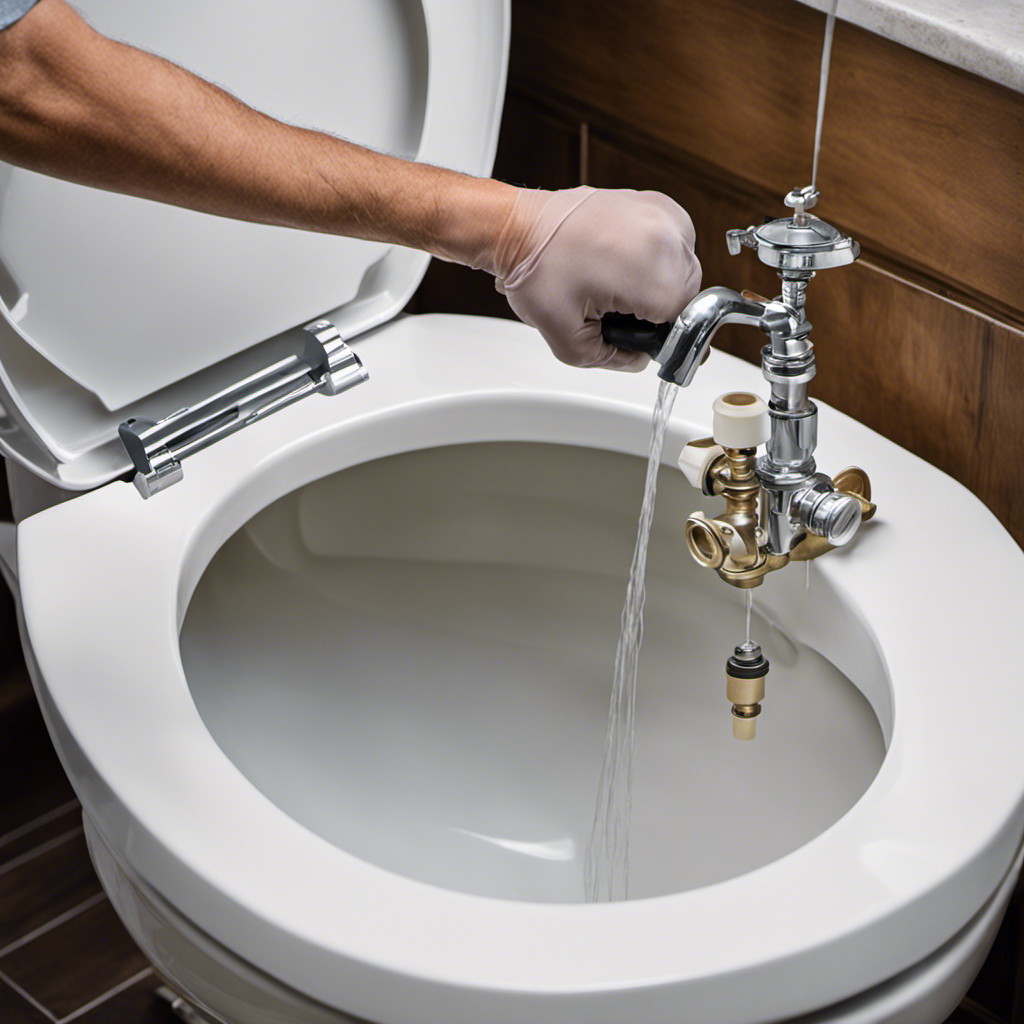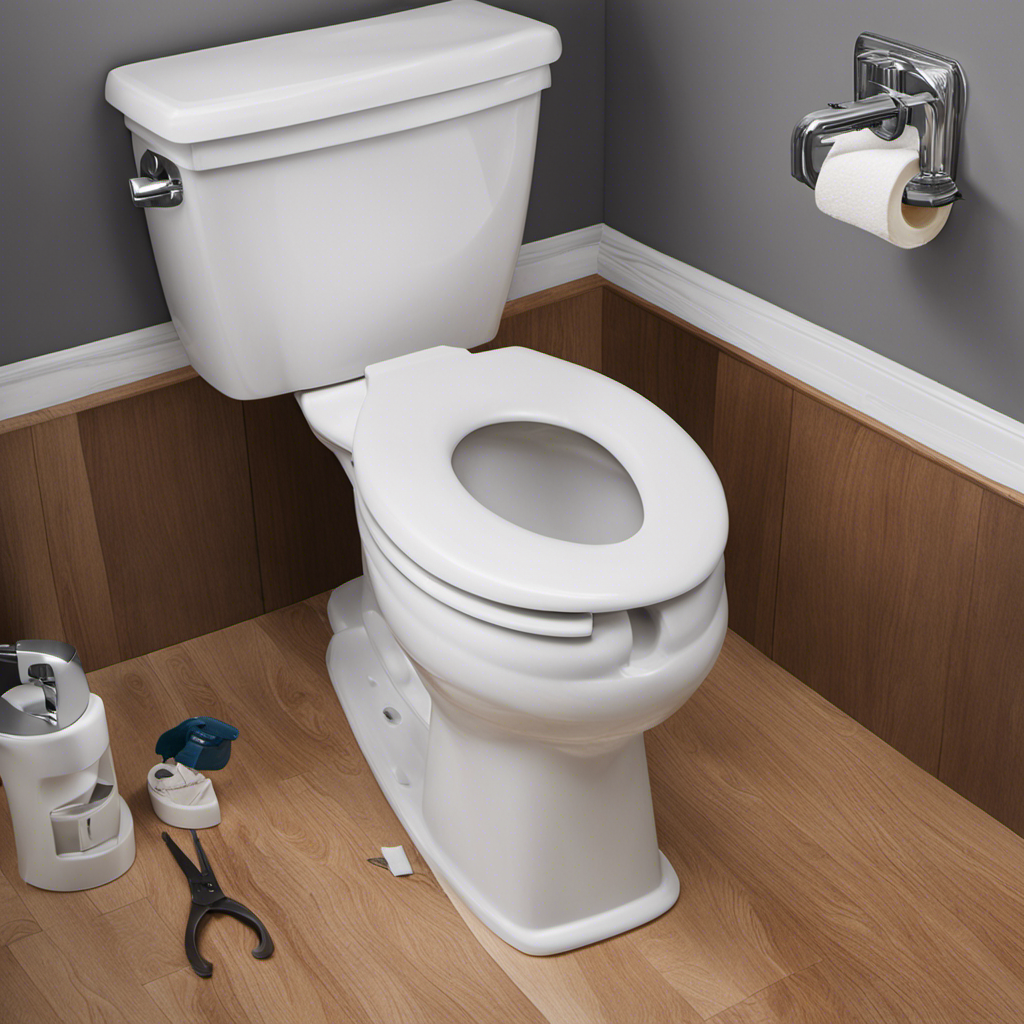I know what you might be thinking – composting toilets? Really? But let me tell you, they are an incredible way to champion eco-friendly living.
In this guide, I’ll walk you through the basics of composting toilets, the environmental benefits they offer, and how you can create educational resources to promote sustainable living.
We’ll also discuss installation tips, best practices for maintenance, and address common questions and concerns.
Together, let’s advocate for an eco-friendly lifestyle and make a positive impact on our planet.
Key Takeaways
- Composting toilets significantly reduce water consumption compared to traditional flush toilets, making them a practical and eco-friendly option for minimizing environmental impact.
- They produce nutrient-rich soil (compost) that can be used for fertilizing plants and gardens, reducing the need for chemical fertilizers and improving soil structure and fertility.
- Composting toilets eliminate the need for expensive sewage systems and reduce pollution, making them a cost-effective and environmentally friendly choice.
- Education and promotion of composting toilets play a crucial role in empowering individuals and communities to make environmentally conscious choices, and financial incentives can make them more affordable and accessible.
Understanding the Basics of Composting Toilets
I’ve learned the three essential components of composting toilets: the toilet fixture, the composting chamber, and the ventilation system.
Maintaining a composting toilet is crucial to ensure its effectiveness and longevity. Regular maintenance includes checking and emptying the composting chamber when it reaches its capacity, adding a bulking agent like sawdust or peat moss to aid decomposition, and monitoring the moisture levels to prevent odor and promote decomposition.
It’s also essential to follow composting toilet regulations to ensure compliance with local health and safety standards. These regulations may vary depending on your location, so it’s important to research and understand the specific requirements in your area.
Exploring the Environmental Benefits
When it comes to exploring the environmental benefits of composting toilets, two key points stand out.
First, they significantly reduce water consumption compared to traditional flush toilets, which helps conserve this precious resource.
Second, composting toilets produce nutrient-rich soil, known as compost, which can be used to fertilize plants and gardens, reducing the need for chemical fertilizers and promoting sustainable agricultural practices.
These benefits make composting toilets a practical and eco-friendly option for those looking to minimize their environmental impact.
Reduced Water Consumption
By using composting toilets, I’m able to significantly reduce water consumption in my household. Water conservation is an important aspect of sustainable living, and composting toilets offer an innovative solution to minimize our water usage.
Traditional toilets can use up to 1.6 gallons of water per flush, while composting toilets require little to no water for flushing. Instead, they use natural processes to break down waste into compost, which can be safely used as fertilizer.
Not only does this reduce water consumption, but it also eliminates the need for expensive sewage systems and reduces pollution. Composting toilets are easy to install and maintain, making them a practical choice for those who want to make a positive environmental impact.
Nutrient-Rich Soil Production
While composting toilets help conserve water, they also contribute to nutrient-rich soil production by transforming waste into valuable compost. Composting toilets are an eco-friendly solution for organic waste management, offering a sustainable alternative to traditional sewage systems.
By separating solid waste from liquid waste, composting toilets create an ideal environment for the decomposition process. The waste is broken down by bacteria, fungi, and other microorganisms, resulting in nutrient-rich compost that can be used to enrich the soil. This process not only reduces the need for chemical fertilizers but also helps to improve soil structure and fertility.
The compost produced from composting toilets is a valuable resource for gardening, agriculture, and landscaping, promoting sustainable practices and reducing our reliance on harmful synthetic fertilizers. It’s an innovative approach that serves both the environment and the community’s need for soil enrichment.
Creating Educational Resources for Sustainable Living
I frequently create educational resources for sustainable living. As someone who is passionate about serving others and promoting a greener future, I believe that education plays a crucial role in empowering individuals and communities to make environmentally conscious choices. One of the ways I contribute to this cause is by organizing educational workshops and community outreach programs. These initiatives provide valuable information and practical tips on various topics related to sustainable living, such as energy conservation, waste reduction, and organic gardening. To give you an idea of what these workshops entail, here is a table highlighting some of the topics covered:
| Workshop Topic | Description | Practical Tips |
|---|---|---|
| Energy Conservation | Learn how to reduce energy consumption | Use energy-efficient appliances and turn off lights |
| Waste Reduction | Discover ways to minimize waste | Practice recycling and composting |
| Organic Gardening | Explore the benefits of growing your own food | Use organic fertilizers and companion planting techniques |
Sharing Tips and Tricks for Successful Installation
When it comes to installing composting toilets, there are a few tips and tricks that can make the process smoother and more successful.
One important best practice is to carefully follow the manufacturer’s instructions to ensure proper installation.
Additionally, troubleshooting common issues, such as odor or leakage, can help address any potential problems that may arise.
Installation Best Practices
One of the most crucial factors for a successful installation of a composting toilet is proper planning. To help you navigate this process, here are some installation tips to consider:
-
Choose the right composting toilet: Research and compare different models to find one that suits your needs and budget. Look for features such as size, capacity, and ventilation systems.
-
Prepare the installation area: Ensure that you have enough space and proper ventilation for the composting toilet. Clear any obstacles and make sure the area is easily accessible for maintenance.
-
Follow the manufacturer’s instructions: Each composting toilet has specific installation requirements. Read the instructions carefully and follow them step-by-step to ensure a proper and functional installation.
Troubleshooting Common Issues
To troubleshoot common issues with composting toilets, it’s important to regularly inspect the ventilation system and empty the compost bin as needed. This ensures proper airflow and prevents odor buildup. However, there are other troubleshooting tips and effective solutions that can help maintain the functionality of composting toilets.
Here is a table summarizing some common issues and their solutions:
| Common Issue | Troubleshooting Tips | Effective Solutions |
|---|---|---|
| Odor | – Check ventilation pipes for blockages |
- Use carbon-rich materials to absorb odors
- Ensure proper moisture levels | – Install an activated carbon filter
- Use compost toilet deodorizers |
| Moisture imbalance | – Adjust the mixture of carbon-rich and nitrogen-rich materials - Monitor moisture levels regularly | – Add dry material to absorb excess moisture
- Use a compost toilet moisture meter |
| Incomplete decomposition | – Ensure proper balance of carbon and nitrogen - Mix the compost regularly
- Provide adequate aeration | – Add compost accelerator
- Increase aeration by turning the pile regularly |
Maintaining Your Composting Toilet System: Best Practices
I personally find it surprisingly easy to regularly maintain my composting toilet system by following these best practices.
Composting toilets are a great eco-friendly option for sustainable living, but they do require some maintenance to ensure their proper functioning.
Here are three key techniques that have helped me troubleshoot and maintain my composting toilet system:
-
Regular cleaning: It’s essential to clean the toilet regularly to prevent odors and ensure hygiene. Emptying the solids container, checking for any blockages, and cleaning the toilet bowl are important tasks to include in your maintenance schedule.
-
Proper ventilation: Adequate ventilation is crucial to prevent the buildup of unpleasant odors. Regularly check the ventilation system and clean or replace filters as needed. This will help maintain a fresh and odor-free environment.
-
Monitoring moisture levels: Composting toilets rely on the right balance of moisture for effective decomposition. Regularly check the moisture content in the composting chamber and adjust as necessary by adding bulking agents or adjusting airflow.
Advocating for an Eco-Friendly Lifestyle
As an advocate for an eco-friendly lifestyle, I actively promote the use of composting toilets and encourage others to adopt sustainable practices. Promoting green living and making sustainable lifestyle choices is crucial for the health of our planet and future generations.
Composting toilets are a practical and efficient solution that can significantly reduce water usage and contribute to a more sustainable way of living. These toilets work by breaking down human waste into compost, which can then be used as a natural fertilizer for plants. By using composting toilets, we can conserve water, minimize pollution, and reduce the strain on our sewage systems.
Additionally, composting toilets are cost-effective and can be installed in a variety of settings, making them accessible to a wide range of individuals and communities.
Together, let’s champion eco-friendly living by embracing composting toilets and other sustainable practices.
Addressing Common Questions and Concerns
My goal is to address all of your common questions and concerns regarding composting toilets and provide you with the information you need to make an informed decision.
Composting toilets are a sustainable and eco-friendly alternative to traditional flush toilets, but there are often misconceptions and health and safety concerns associated with them. Let’s debunk those misconceptions and address the concerns together:
-
Odor: Contrary to popular belief, composting toilets can be virtually odorless when maintained properly.
-
Health Risks: When operated correctly and maintained regularly, composting toilets pose no health risks. The decomposition process kills harmful pathogens and bacteria.
-
Maintenance: Composting toilets do require regular maintenance, but it’s a simple and straightforward process that can be easily managed.
Encouraging the Adoption of Composting Toilets
How can we actively promote the adoption of composting toilets in our communities?
To encourage the widespread use of composting toilets, we need effective adoption strategies and community engagement. One way to promote adoption is through education and awareness campaigns. By highlighting the benefits of composting toilets, such as reducing water usage and producing nutrient-rich compost, we can inspire individuals and communities to make the switch.
Another strategy is to provide financial incentives, such as tax credits or subsidies, to make composting toilets more affordable and accessible. Additionally, partnering with local organizations and community leaders can help spread the message and encourage adoption. By actively engaging with our communities and providing support, we can empower individuals to embrace composting toilets as a sustainable and eco-friendly solution.
To ensure the success of our efforts, gathering feedback and fine-tuning the process is crucial. We should establish channels for individuals to share their experiences and address any concerns they may have. This feedback can help us identify potential barriers to adoption and tailor our strategies accordingly.
Regular communication and follow-up support are essential to maintain engagement and provide ongoing assistance. By continuously refining our approach based on community feedback, we can create a positive and sustainable impact in promoting the adoption of composting toilets.
Gathering Feedback and Fine-Tuning the Process
I will gather feedback and fine-tune the process by conducting surveys and hosting focus groups. Gathering feedback is crucial in any endeavor to ensure continuous improvement and meet the needs of those we serve. By actively seeking feedback, we can identify areas for improvement and make necessary adjustments to improve efficiency.
Here are three ways in which we can gather feedback and improve efficiency:
-
Surveys: Conducting surveys allows us to collect quantitative data and insights from a large number of participants. We can design surveys to gather feedback on specific aspects of our process and measure satisfaction levels.
-
Focus groups: Hosting focus groups provides an opportunity for in-depth discussions and qualitative feedback. By bringing together a small group of individuals, we can delve deeper into their experiences and gather valuable insights.
-
Feedback forms: Implementing feedback forms in our process allows individuals to provide their thoughts and suggestions at their convenience. These forms can be easily accessible online or in-person, ensuring that everyone has a chance to voice their opinions.
Frequently Asked Questions
How Much Does a Composting Toilet System Cost, and Is It a Cost-Effective Option for Sustainable Living?
Composting toilet systems can vary in cost depending on the brand, features, and installation requirements. Generally, a basic system can cost around $1,000 to $2,000, while more advanced models can range from $3,000 to $5,000. Although the initial investment may seem high, composting toilets offer long-term savings by reducing water consumption and eliminating the need for costly sewage infrastructure.
In addition, they provide numerous benefits for sustainable living, such as reducing pollution, conserving water resources, and producing nutrient-rich compost.
Are There Any Health Risks Associated With Using a Composting Toilet System?
Are there any health risks associated with using a composting toilet system?
Well, when it comes to health, it’s important to consider the maintenance requirements of these systems. Proper maintenance is key to preventing any potential health risks. By regularly emptying and cleaning the composting toilet, you can ensure a safe and hygienic environment.
It’s also crucial to follow the manufacturer’s instructions and guidelines to minimize any potential risks and enjoy the benefits of an eco-friendly lifestyle.
Can Composting Toilets Be Used in All Types of Climates and Environments?
Composting toilets can be used in a variety of climates and environments, including extreme climates and remote areas. These toilets are designed to break down waste using natural processes, such as decomposition and evaporation. They don’t require water or electricity, making them ideal for off-grid living.
However, it’s important to consider factors like temperature, humidity, and proper maintenance to ensure the composting process is effective. With proper care and attention, composting toilets can be a sustainable and eco-friendly option for waste management.
How Do You Manage Odor Control With a Composting Toilet System?
When it comes to managing odor control in a composting toilet system, there are some practical maintenance tips that can make a big difference.
Firstly, regular maintenance and proper ventilation are key. Emptying the composting bin regularly and adding a carbon-rich cover material helps to absorb and neutralize odors.
Additionally, using natural odor control products, such as essential oils or baking soda, can further eliminate any unpleasant smells.
What Are the Potential Challenges or Limitations of Using a Composting Toilet System?
Challenges and limitations can arise when using a composting toilet system.
One challenge is the need for regular maintenance and monitoring to ensure proper functioning.
Another limitation is the potential for odors if the system isn’t managed correctly.
Additionally, composting toilets may not be suitable for all environments or living situations, as they require space for installation and may not meet certain building codes.
Nonetheless, with proper knowledge and care, these challenges can be overcome, making composting toilets a viable option for eco-friendly living.
Conclusion
In conclusion, embracing eco-friendly living with composting toilets is a powerful step towards a greener future. By harnessing the natural process of decomposition, we can transform waste into valuable resources while reducing our environmental impact.
Imagine a world where every flush contributes to nourishing the soil and conserving water. With the right knowledge and tools, we can champion sustainable living and inspire others to join us on this transformative journey.
Together, we can create a healthier planet for generations to come.










